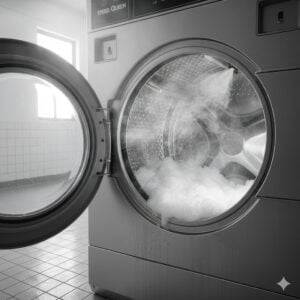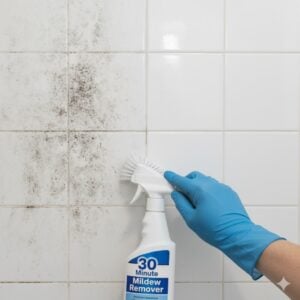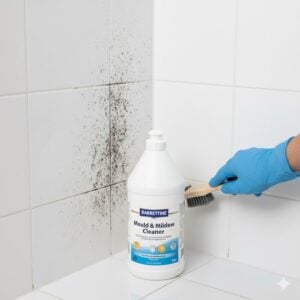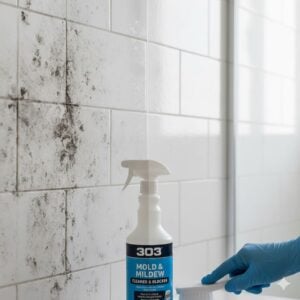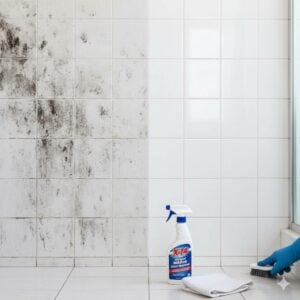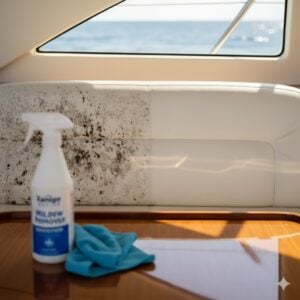Fungal spores are tiny, invisible particles released by fungi into the air. They’re all around us—indoors and outdoors—and while some are harmless, others can cause serious problems, especially in enclosed spaces like homes, offices, or buildings in humid climates like the UAE. If you’ve ever wondered why mold keeps coming back or why your allergies flare up indoors, fungal spores are often to blame.
In this article, we explain what fungal spores are, how they spread, where they thrive, and most importantly, what you can do to protect your home and health from their impact. Whether you’re battling mold on walls or just want to breathe easier indoors, understanding spores is the first step.
Table of Contents
Toggle1. What Are Fungal Spores and Why Do They Matter?
Fungal spores are the reproductive units of fungi, similar to seeds in plants. They’re produced in massive quantities by mold and other types of fungi, and they travel easily through air currents, water, or on surfaces. When they land in a suitable environment—warm, damp, and poorly ventilated—they can start to grow into visible mold colonies.
Most spores are microscopic, measuring between 2–10 microns, which means you can inhale them without knowing. This is especially risky for people with asthma, allergies, or compromised immune systems.
Fungal spores matter because they:
- Can trigger respiratory problems like coughing, wheezing, or sinus irritation
- Contribute to poor indoor air quality in homes and offices
- Spread mold contamination across surfaces if not properly cleaned
- Can grow into toxic molds like black mold if left unchecked
2. Where Do Fungal Spores Come From?
Spores originate from fungi, which thrive in nature—on soil, plants, decaying wood, and leaves. But indoors, they’re mostly produced by molds growing in damp or poorly ventilated areas.
Common indoor sources in the UAE include:
- Bathroom ceilings, especially near exhaust fans or around the shower
- Behind furniture placed against cold external walls
- Under sinks or inside cabinets with leaking pipes
- AC ducts and HVAC systems not regularly cleaned
- Basements, storage rooms, or enclosed areas with high humidity
Because spores are airborne, they don’t just stay in one place. Turning on a fan or opening a window can spread them to clean areas quickly. That’s why treating mold means more than just wiping it off—it means controlling the environment.
3. Health Risks of Fungal Spores in Indoor Spaces
For most healthy individuals, fungal spores may cause only mild irritation. But for many people—especially those with allergies, respiratory conditions, or weakened immune systems—exposure can be harmful or even dangerous.
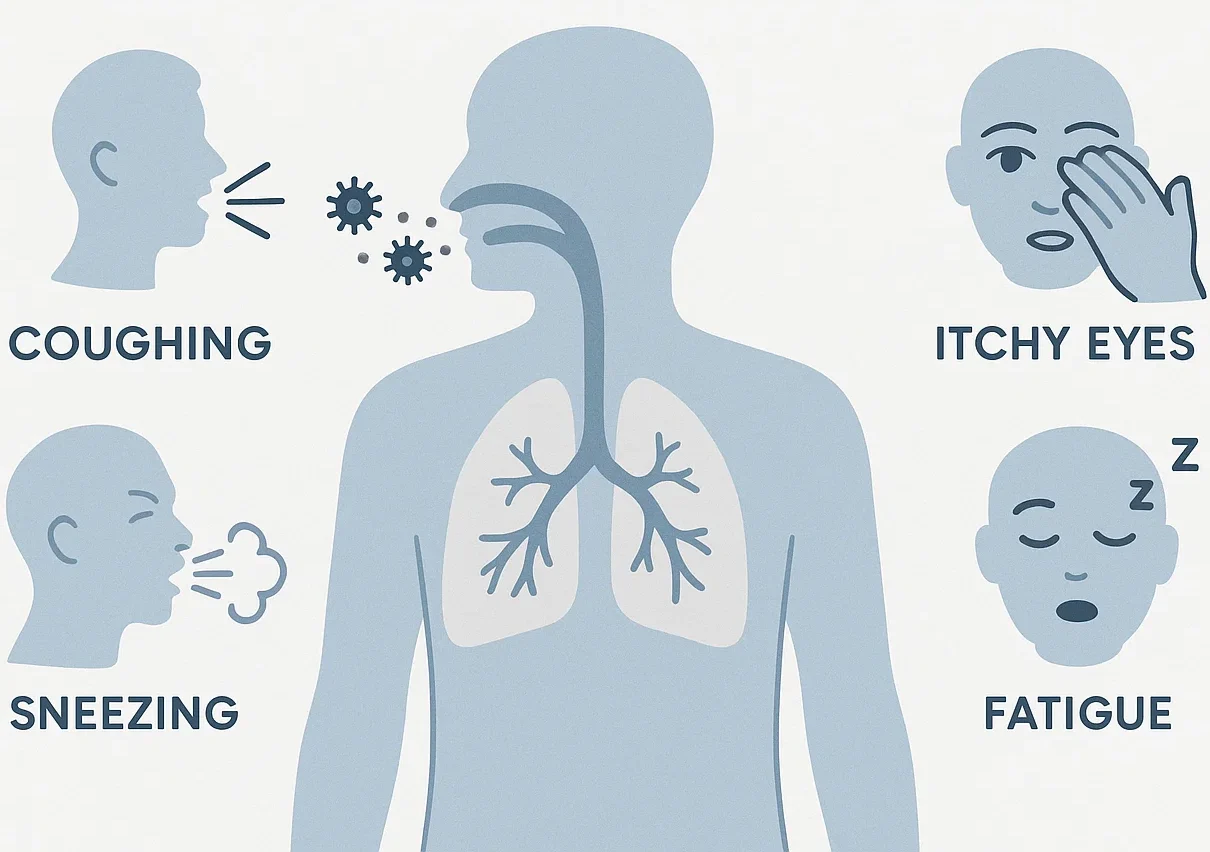
Common symptoms of spore exposure include:
- Itchy eyes, sneezing, or runny nose
- Chronic sinus congestion or frequent sinus infections
- Persistent cough or throat irritation
- Worsening asthma attacks or difficulty breathing
- Skin irritation or rashes in sensitive individuals
In severe cases, exposure to certain toxic molds (such as Stachybotrys chartarum) can lead to neurological effects, fatigue, or even long-term lung issues.
Young children, elderly individuals, and those with immune disorders should be especially cautious, as they are more vulnerable to fungal spore complications. It’s not just about comfort—it’s about safety.
4. How to Prevent Fungal Spores from Taking Over Your Home
Fungal spores can’t be eliminated completely from the air, but you can drastically reduce their numbers and stop them from turning into dangerous mold colonies. The key is managing moisture and ensuring good ventilation.
Here’s what we recommend for UAE homes:
- Use a dehumidifier: Especially during the summer months when AC use can cause condensation. Keep humidity below 60% indoors.
- Fix leaks promptly: Even small pipe drips or AC condensation leaks can create ideal mold growth conditions.
- Ventilate high-moisture areas: Open windows after showers, install extractor fans in bathrooms and kitchens, and avoid drying clothes indoors.
- Clean AC filters regularly: HVAC systems can become spore super-spreaders if not maintained.
- Remove porous materials after water damage: Carpets, ceiling tiles, and drywall should be inspected if they’ve gotten wet.
Remember, once mold begins to grow, it’s no longer just a cleaning issue. Professional help is often needed to safely remove contamination and stop future growth.
5. How Bio-On Handles Fungal Spore Contamination
At Bio-On, we specialize in detecting, treating, and preventing fungal spore contamination in all types of properties across the UAE. Our certified team uses internationally approved methods to ensure not only removal of visible mold but also treatment of the hidden spores that caused it.
Here’s how a typical process works:
- Inspection: We identify the source of moisture and check for visible and hidden mold.
- Air Quality Testing: We measure airborne spore levels using lab-grade equipment.
- Containment & Removal: We isolate affected areas and use HEPA-filter vacuums and antifungal agents to clean thoroughly.
- Dehumidification: Industrial-grade dryers and moisture meters ensure the environment is safe before we finish.
- Prevention Advice: We guide you on how to keep your space mold-free long term.
If you’re dealing with stubborn mold or suspect airborne spores might be making your home unsafe, don’t wait. Click the contact button on the right-middle of this post and get in touch. Our team is available 24/7 to support you anywhere in the UAE.
Conclusion
Fungal spores are more than just floating dust—they’re living seeds of mold that can damage property and health if ignored. In Dubai and other parts of the UAE, where humidity and AC usage create ideal conditions, it’s essential to understand how these spores work and how to stop them.
We hope this guide has helped you recognize the risks and start thinking about your home’s air safety. Prevention is always easier—and cheaper—than major mold removal. But if things have already spread, we have your back.
Need help? Just click the contact button and let us handle the rest.








